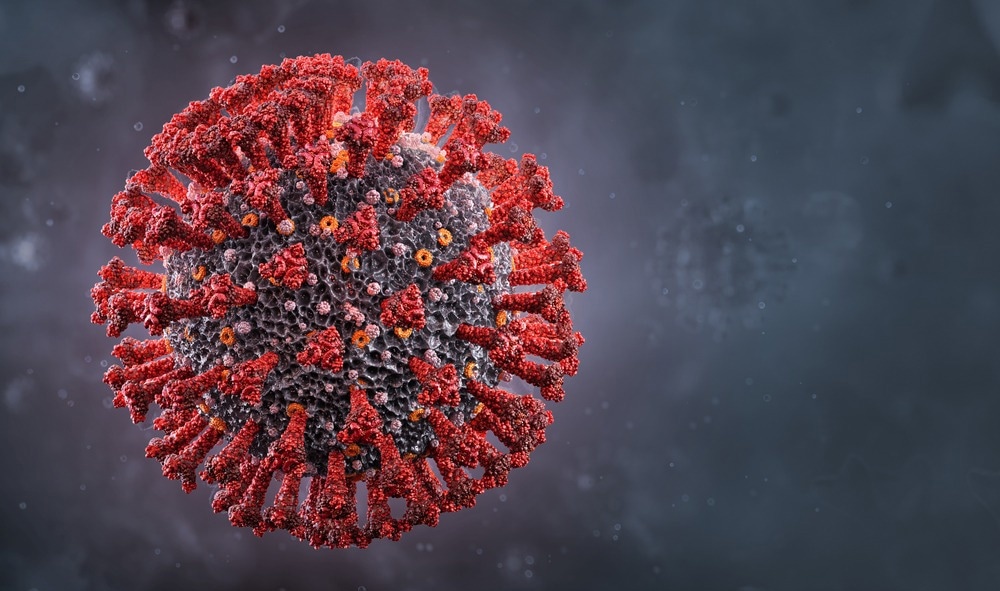The requirement for Fc effector functions to protect against SARS-CoV-2 infection
In a recent study posted to the bioRxiv* server, researchers determined which specific fragment crystallizable (Fc) effector functions protect against severe acute respiratory syndrome coronavirus 2 (SARS-CoV-2) infection, especially its emerging variants.

Background
Despite decreased efficacy against emerging SARS-CoV-2 variants, messenger ribonucleic acid (mRNA)-1273 and BNT162b2 coronavirus disease 2019 (COVID-19) vaccines protect against severe illness and death. Indeed, some aspects of immunity controlling infection in the lungs are yet unexplored. These could be anamnestic B cell responses that elicit cross-reactive neutralizing antibodies (nAbs) or non-neutralizing, cross-reactive nAbs that promote Fc-mediated effector functions.
Vaccine-elicited antibodies can bind the Fc region of Fc-gamma receptors (FcγRs) and facilitate effector functions against multiple SARS-CoV-2 variants, including variants of concern (VOCs), such as Omicron. Studies have shown an association of this unique phenomenon with improved clinical outcomes in COVID-19 patients. However, studies have not yet determined or elucidated a pivotal relationship between Fc-mediated effector functions and vaccine-triggered SARS-CoV-2 immunity.
About the study
In the present study, researchers evaluated Fc-mediated effector functions as an alternative immune mechanism that facilitates vaccine-mediated protection against new SARS-CoV-2 variants with mutations in the spike (S) receptor-binding domain (RBD) and N-terminal domain (NTD) regions.
They conducted their experiments in vivo in knockout (KO) mice using passive and active immunization methodologies. Further, the researchers pooled immune serum from vaccinated mice and profiled them for anti-S antibodies against the ancestral SARS-CoV-2 strain and its other variants of concern (VOCs). They also performed cellular depletions to investigate the cell type responsible for the protection conferred by passively transferred antibodies.
Study findings
Previous in vitro studies have shown that convalescent sera efficiently neutralize new SARS-CoV-2 strains via Fc effector functions. On the contrary, sera of COVID-19 patients with more severe COVID-19 have impaired FcγR binding and effector functions. Likewise, studies have shown that passively transferred monoclonal antibodies in mice retain neutralizing capacity against antigenically distant SARS-CoV-2 strains via Fc effector functions.
The current study demonstrated that Fc-FcγR engagement and alveolar macrophages were crucial for vaccine-elicited nAb-mediated protection against infection by SARS-CoV-2 variants, including Omicron VOC. KO mice lacking expression of activating FcγRs, especially murine FcγR III, or having lesser or no alveolar macrophages could not efficiently neutralize multiple SARS-CoV-2 strains using passively transferred immune serum.
Even those mice vaccinated with the preclinical mRNA-1273 vaccine failed to combat Omicron BA.5 in the respiratory tract that lacked FcγR III. After active immunization, the researchers noted that several Fc effector functions were associated with increased binding of vaccine-elicited antibodies to S. These Fc effector functions were antibody-dependent cellular cytotoxicity (ADCP) and antibody-dependent complement deposition (ADCD).
The passive immunization strategy helped mice mount an effective immune response in the lungs against infection by SARS-CoV-2 strains MA-10 or WA1/2020 N501Y/D614G, albeit in the presence of FcγR III expression. Intriguingly, these mice retained serum-neutralizing activity after the passive transfer of immune sera. These findings are consistent with studies in hamsters showing neutralizing mAbs that bind RBD epitopes. Moreover, Fc-engineered anti-SARS-CoV-2 non-neutralizing and neutralizing mAbs binding the NTD and RBD in S conferred more protection in these animals.
Another observation was the less pronounced effect of vaccine-mediated nAbs in the upper respiratory tract (URT) following passive immune sera transfer. Indeed, fewer immunoglobulin G (IgG) antibodies accumulate in URT sera following passive transfer. Nevertheless, the researchers observed FcγR-dependent reductions in SARS-CoV-2 load in the URT after active mRNA vaccination, likely due to higher levels of systemic anti-S immunoglobulins or tissue-resident B cells-elicited antibodies.
KO mice vaccinated with mRNA-1273 also exhibited comparable levels of cluster of differentiation (CD)4+ and CD8+ T cell responses. mRNA-1273 vaccinated FcγR KO mice showed reduced ability to control infection by Omicron BA.5 in the nasal turbinates and lungs due to loss of Fc-FcγR interactions mediated antibody effector functions. Though monocytes, neutrophils, and interstitial macrophages also express FcγR III, depletion of only the alveolar macrophages compromised protection against SARS-CoV-2 infection in the lungs in an antibody-dependent fashion.
Conclusions
To summarize, the study remarkably showed the significance of specific murine FcγRs in vaccine-elicited nAb's mediated protection against SARS-CoV-2 infection. It reasonably explains how monovalent vaccine-mediated protection works to combat severe illness when nAbs in sera lose their efficacy. They also identified alveolar macrophages as a key cell type for passive immunization. Future vaccination strategies could target antibodies with stronger Fc effector functions to generate broadly protective immune responses and develop improved in vitro Fc effector function assays that correlate better with protection in vivo.
*Important notice
bioRxiv publishes preliminary scientific reports that are not peer-reviewed and, therefore, should not be regarded as conclusive, guide clinical practice/health-related behavior, or treated as established information.
- Fc-gamma receptor-dependent antibody effector functions are required for vaccine protection against infection by antigenic variants of SARS-CoV-2, Samantha R. Mackin, Pritesh Desai, Bradley M. Whitener, Courtney E. Karl, Meizi Liu, Ralph S. Baric, Darin K. Edwards, Taras M. Chicz, Ryan P. McNamara, Galit Alter, Michael S. Diamond. bioRxiv. doi: https://doi.org/10.1101/2022.11.27.518117
https://www.biorxiv.org/content/10.1101/2022.11.27.518117v1
Posted in: Medical Science News | Medical Research News | Disease/Infection News
Tags: Antibodies, Antibody, B Cell, Cell, Coronavirus, Coronavirus Disease COVID-19, covid-19, Cytotoxicity, Efficacy, Immune Response, immunity, Immunization, Immunoglobulin, in vitro, in vivo, Knockout, Lungs, Neutrophils, Omicron, Preclinical, Receptor, Respiratory, Ribonucleic Acid, SARS, SARS-CoV-2, Severe Acute Respiratory, Severe Acute Respiratory Syndrome, Syndrome, Vaccine

Written by
Neha Mathur
Neha is a digital marketing professional based in Gurugram, India. She has a Master’s degree from the University of Rajasthan with a specialization in Biotechnology in 2008. She has experience in pre-clinical research as part of her research project in The Department of Toxicology at the prestigious Central Drug Research Institute (CDRI), Lucknow, India. She also holds a certification in C++ programming.
Source: Read Full Article



